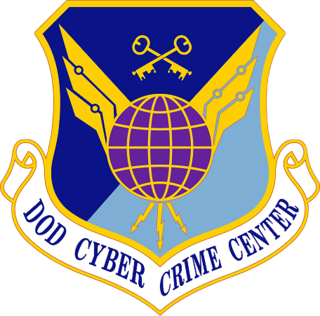
The Defense Advanced Research Projects Agency (DARPA) is a research and development agency of the United States Department of Defense responsible for the development of emerging technologies for use by the military.
The DARPA Grand Challenge is a prize competition for American autonomous vehicles, funded by the Defense Advanced Research Projects Agency, the most prominent research organization of the United States Department of Defense. Congress has authorized DARPA to award cash prizes to further DARPA's mission to sponsor revolutionary, high-payoff research that bridges the gap between fundamental discoveries and military use. The initial DARPA Grand Challenge was created to spur the development of technologies needed to create the first fully autonomous ground vehicles capable of completing a substantial off-road course within a limited time. The third event, the DARPA Urban Challenge extended the initial Challenge to autonomous operation in a mock urban environment. A more recent Challenge, the 2012 DARPA Robotics Challenge, focused on autonomous emergency-maintenance robots, and new Challenges are still being conceived.

The Air Force Research Laboratory (AFRL) is a scientific research organization operated by the United States Air Force Materiel Command dedicated to leading the discovery, development, and integration of aerospace warfighting technologies, planning and executing the Air Force science and technology program, and providing warfighting capabilities to United States air, space, and cyberspace forces. It controls the entire Air Force science and technology research budget which was $2.4 billion in 2006.
The High Energy Liquid Laser Area Defense System (HELLADS), is a counter-RAM system under development that will use a powerful (150 kW) laser to shoot down rockets, missiles, artillery and mortar shells. The initial system will be demonstrated from a static ground-based installation, but in order to eventually be integrated on an aircraft, the final design would require a maximum weight of 750 kg (1,650 lb) and a maximum envelope of 2 cubic meters (70.6 feet3).

The DARPA Falcon Project is a two-part joint project between the Defense Advanced Research Projects Agency (DARPA) and the United States Air Force (USAF) and is part of Prompt Global Strike. One part of the program aims to develop a reusable, rapid-strike Hypersonic Weapon System (HWS), now retitled the Hypersonic Cruise Vehicle (HCV), and the other is for the development of a launch system capable of accelerating an HCV to cruise speeds, as well as launching small satellites into Earth orbit. This two-part program was announced in 2003 and continued into 2006.
The Institute for Defense Analyses (IDA) is an American non-profit corporation that administers three federally funded research and development centers (FFRDCs) – the Systems and Analyses Center (SAC), the Science and Technology Policy Institute (STPI), and the Center for Communications and Computing (C&C) – to assist the United States government in addressing national security issues, particularly those requiring scientific and technical expertise. It is headquartered in Alexandria, Virginia.

Hypersonic flight is flight through the atmosphere below altitudes of about 90 km at speeds greater than Mach 5, a speed where dissociation of air begins to become significant and high heat loads exist. Speeds of Mach 25+ have been achieved below the thermosphere as of 2020.
Dylan Schmorrow is an American scientist and retired United States Defense Official. He is currently the chief scientist at Soar Technology, Inc.. He is a retired US Navy captain, and served as the deputy director of the Human Performance, Training, and BioSystems Research Directorate at the Office of the Assistant Secretary of Defense, Research & Engineering at Office of the Secretary of Defense. He was also specialty leader of the Aerospace Experimental Psychologist community and an acquisition professional in the Naval Acquisition Corps.

The Department of Defense Cyber Crime Center (DC3) is designated as a Federal Cyber Center by National Security Presidential Directive 54/Homeland Security Presidential Directive 23, as a Department of Defense (DoD) Center Of Excellence for Digital and Multimedia (D/MM) forensics by DoD Directive 5505.13E, and serves as the operational focal point for the Defense Industrial Base (DIB) Cybersecurity program. DC3 operates as a Field Operating Agency (FOA) under the Inspector General of the Department of the Air Force.
A sixth-generation fighter is a conceptualized class of jet fighter aircraft design more advanced than the fifth-generation jet fighters that are currently in service and development. Several countries have announced the development of a sixth-generation aircraft program, including the United States, Russia and China, while Japan, Italy, the United Kingdom, France, Germany, Spain, and Sweden have joined together in collaborative multinational programs in an effort to spread development costs. The first sixth-generation fighters are expected to enter service in the 2030s.
Adaptive Vehicle Make was a portfolio of programs overseen by DARPA, of the United States Department of Defense. AVM attempted to address revolutionary approaches to the design, verification, and manufacturing of complex defense systems and vehicles. The three primary programs were META, Instant Foundry Adaptive through Bits (iFAB), and Fast Adaptable Next-Generation Ground Vehicle programs. Many components of the program leveraged crowdsourcing and were open source and the ultimate intent was to crowdsource a next generation combat vehicle. The program was managed by Nathan Wiedenman under DARPA's Tactical Technology Office. A Proposer's Day was held and several Broad Agency Announcements released on 7 October 2010. The AVM program was ended in February 2014 without building and testing a complete vehicle.

The National Robotics Engineering Center (NREC) is an operating unit within the Robotics Institute (RI) of Carnegie Mellon University. NREC works closely with government and industry clients to apply robotic technologies to real-world processes and products, including unmanned vehicle and platform design, autonomy, sensing and image processing, machine learning, manipulation, and human–robot interaction.
The DARPA XS-1 was an experimental spaceplane/booster with the planned capability to deliver small satellites into orbit for the U.S. Military. It was reported to be designed to be reusable as frequently as once a day, with a stated goal of doing so for 10 days straight. The XS-1 was intended to directly replace the first stage of a multistage rocket by taking off vertically and flying to hypersonic speed and high suborbital altitude, enabling one or more expendable upper stages to separate and deploy a payload into low Earth orbit. The XS-1 would then return to Earth, where it could ostensibly be serviced fast enough to repeat the process at least once every 24 hours.
TransApps was a program of the Defense Advanced Research Projects Agency (DARPA) of the United States Department of Defense. The goal of the program was to demonstrate rapid development and fielding of secure mobile apps on the battlefield. With its agile and user-centric approach, the DARPA program specifically addressed the limitations of the slow requirements-centric software development cycle followed by many Army programs of record.

Stephen Joseph Lukasik was an American physicist who served in multiple high-level defense and scientific related positions for advancing the technologies and techniques for national defense and the detection and control of diverse types of weapons of mass destruction, especially nuclear devices. He was the second longest serving Director of DARPA - the Defense Advanced Research Projects Agency – during which numerous new technologies including packet and internet protocols were developed. He was also the first Chief Scientist of the Federal Communications Commission where he created its Office of Science and Technology and which facilitated the commercial deployment of new technology that included spread spectrum technology.
The 2016 Cyber Grand Challenge (CGC) was a challenge created by The Defense Advanced Research Projects Agency (DARPA) in order to develop automatic defense systems that can discover, prove, and correct software flaws in real-time.
The Information Innovation Office (I2O) is one of the seven technical offices within DARPA, an agency of the U.S. Department of Defense that is responsible for the development of advanced technology for national security. I2O was created in 2010 by combining the Information Processing Techniques Office (IPTO) and the Transformational Convergence Technology Office (TCTO). The office focuses on basic and applied research in the areas of cyber security, data analytics, and human-machine symbiosis.
The Internet of Military Things (IoMT) is a class of Internet of things for combat operations and warfare. It is a complex network of interconnected entities, or "things", in the military domain that continually communicate with each other to coordinate, learn, and interact with the physical environment to accomplish a broad range of activities in a more efficient and informed manner. The concept of IoMT is largely driven by the idea that future military battles will be dominated by machine intelligence and cyber warfare and will likely take place in urban environments. By creating a miniature ecosystem of smart technology capable of distilling sensory information and autonomously governing multiple tasks at once, the IoMT is conceptually designed to offload much of the physical and mental burden that warfighters encounter in a combat setting.
The Next Generation Air Dominance (NGAD) is a United States Air Force (USAF) sixth-generation air superiority initiative with a goal of fielding a "family of systems" that is to succeed the Lockheed Martin F-22 Raptor. A manned fighter aircraft is the centerpiece program of NGAD and has been referred to as the F-X or Penetrating Counter-Air (PCA) and is to be supported by uncrewed Collaborative Combat Aircraft (CCA), or "Loyal Wingman" platforms, through manned-unmanned teaming (MUM-T).

The Hypersonic Air-breathing Weapon Concept is a scramjet powered air-launched hypersonic cruise missile project at the U.S. Defense Advanced Research Projects Agency (DARPA), that had a successful hypersonic flight announced in September 2021. It is a kinetic energy weapon, without an explosive warhead.







